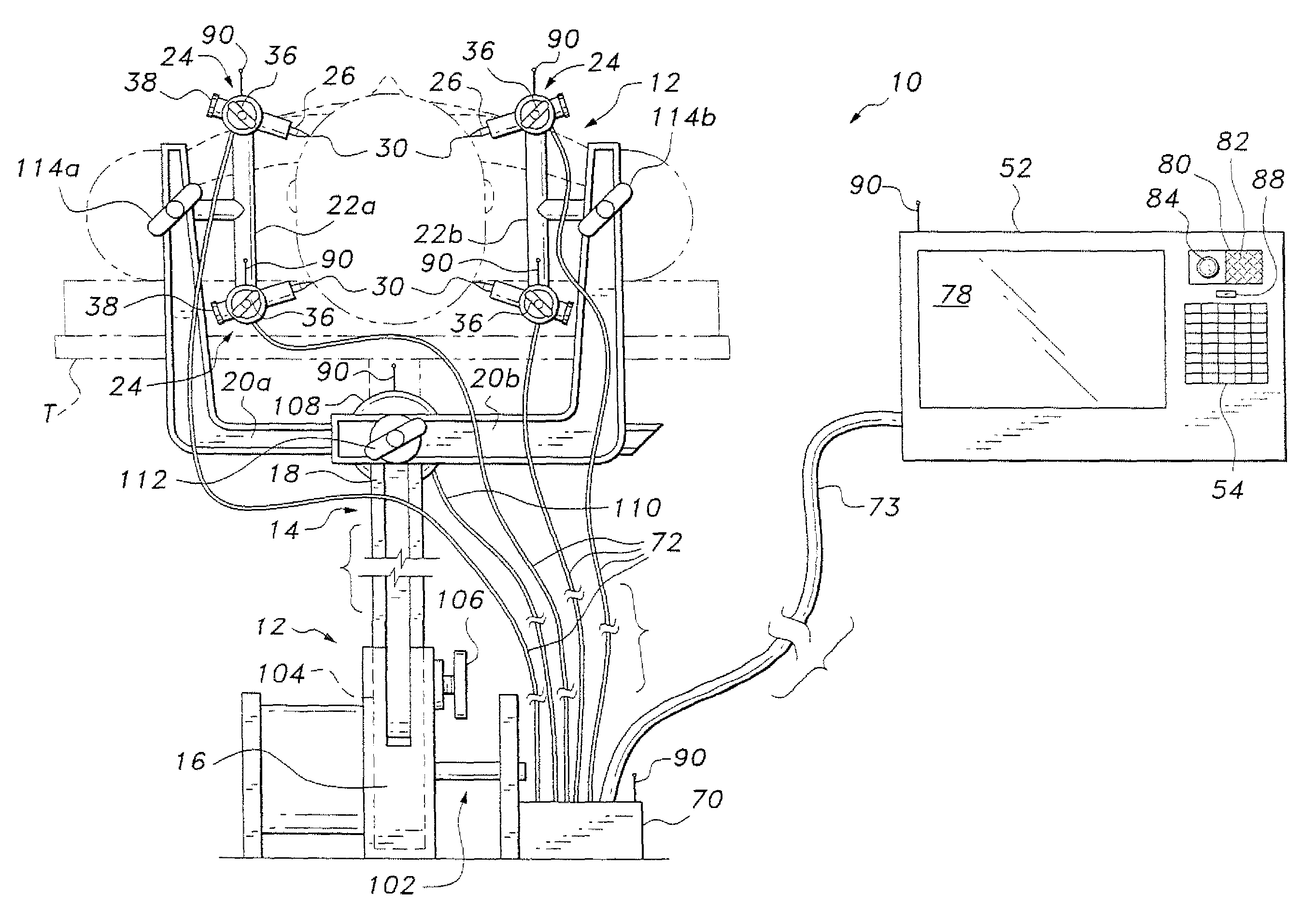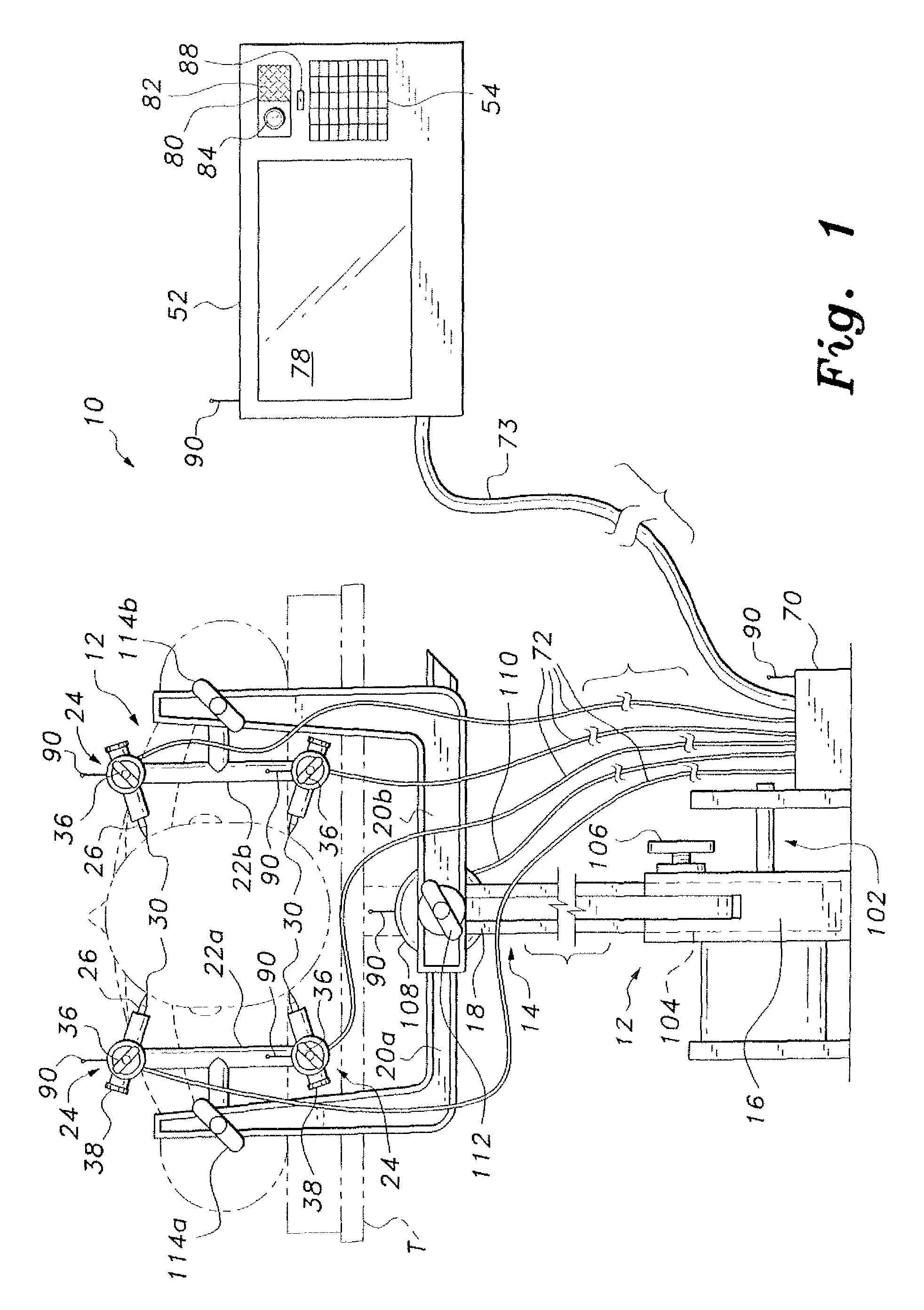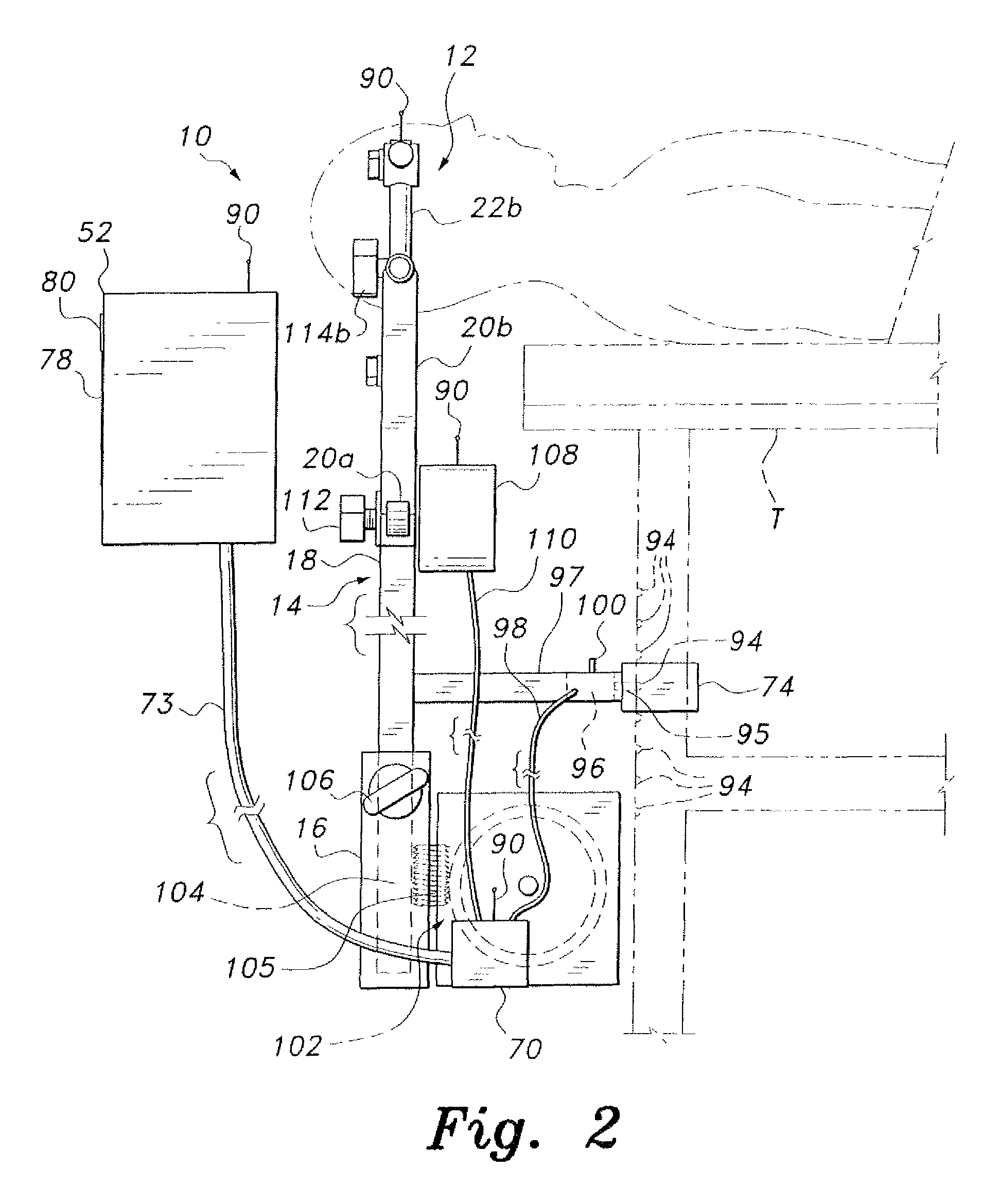Skull clamp system with pressure limiting and alarm systems
a clamping system and alarm system technology, applied in the field of surgical and medical treatment practices, can solve the problems of unintentional bone fracture, potentially dangerous tactile feedback sensed by the surgeon, manual over-tightening of the clamping device to the skull of the patient, etc., to reduce the chance of a resulting infection, and minimize bleeding
- Summary
- Abstract
- Description
- Claims
- Application Information
AI Technical Summary
Benefits of technology
Problems solved by technology
Method used
Image
Examples
Embodiment Construction
[0020]Referring to the accompanying figures, the following description of exemplary embodiments of the skull clamp system, generally shown at 10, is directed to a preferred embodiment having multiple skull immobilizing pins 26; however, the number of pins 26, which can be included in the system 10 and fully provide all of the power drive and safety systems is at least one.
[0021]The skull clamp system, as shown and described in FIGS. 1-6 and the accompanying description, having power driven skull immobilizing pins 26 and a sensor safety system 62 with pressure limiting and alarm systems, provides a structure capable of absolutely immobilizing the head of a patient for medical procedures. The skull clamp system 10 also includes means for limiting the pressure applied against the bone of the skull by each of the skull immobilizing pins 26, and means for alerting medical personnel of any slippage or movement of the pins 26 relative to the skull of a patient.
[0022]FIGS. 1 and 2 of the dr...
PUM
 Login to View More
Login to View More Abstract
Description
Claims
Application Information
 Login to View More
Login to View More - R&D
- Intellectual Property
- Life Sciences
- Materials
- Tech Scout
- Unparalleled Data Quality
- Higher Quality Content
- 60% Fewer Hallucinations
Browse by: Latest US Patents, China's latest patents, Technical Efficacy Thesaurus, Application Domain, Technology Topic, Popular Technical Reports.
© 2025 PatSnap. All rights reserved.Legal|Privacy policy|Modern Slavery Act Transparency Statement|Sitemap|About US| Contact US: help@patsnap.com



